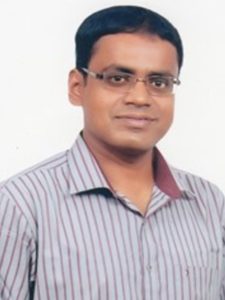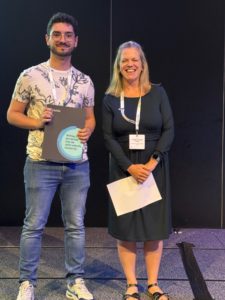Congratulations to the winners of the Best Short Oral Presentation Prizes at the 21st International Zeolite Conference in Dalian, China!
Guangrui Chen, Jilin University
Guangrui Chen received his Ph.D. degree from Jilin University in 2022 under the supervision of Prof. Jihong Yu. He is currently a postdoctoral researcher in Prof. Yu’s group. His research focuses on developing new synthesis strategies and exploring catalytic applications for hierarchical zeolites and zeolite-based composites.
Qiang Zhang, Jilin University
Qiang Zhang is currently an associate professor at Jilin University. He received his Ph.D. degree from Jilin University in 2019 under the supervision of Prof. Jihong Yu. After a Dingxin Scholar Postdoctoral experience with Prof. Jihong Yu, he joined the International Center of Future Science at Jilin University in 2024. His research interests include designed synthesis and crystallization mechanism of zeolite materials and the catalytic applications of zeolite and zeolite-based catalysts in C1 chemistry, lactide production, propane dehydrogenation, and low-temperature alkane oxidation.
Fang Li, East China Normal University
Peng Zhu, Dalian University of Technology
Weiyu Wang, Innovation Academy for Precision Measurement Science and Technology,CAS
Hao Xiong, Tsinghua University
Hao Xiong received his BS degree (2019) and PhD degree (2024) in Chemical Engineering from Tsinghua University under the supervision of Prof. Fei Wei. He continued his postdoctoral work at Tsinghua University. His research interests are in the development of in situ low-dose imaging techniques and their application in heterogeneous catalysis.
Bo Peng, Sinopec Research Institute of Petroleum Processing Co., LTD.
Bo Peng graduated from Tsinghua University and Nanjing University with B. Eng. and M. Sc. degrees, respectively. He then worked as a Wissenschaftlicher Mitarbeiter at Lehrstuhl II für Technische Chemie, Technische Universität München, and received his doctoral title (Dr.-Ing.) in 2016 supervised by Prof. Johannes A. Lercher. Afterward, he conducted postdoctoral research at Pacific Northwest National Laboratory (Applied Catalysis Team, Energy & Environment Directorate) and was offered a research engineer position in 2019. At the end of 2019, Bo joined SINOPEC Research Institute of Petroleum Processing (RIPP) as a staff engineer in the FCC Catalysts Department. The institute re-established the Basic Research Department in 2024, where Bo acts as the deputy director responsible for the R&D activities. He is also a research fellow and is an adjunct graduate student advisor at multiple universities and research institutes. Bo is active in application-oriented fundamental research for refining technology and green carbon science, specializing in heterogeneous catalysis and reaction engineering. In addition, he is the executive director of RIPP’s youth academic committee, an editorial board member of the journal “Carbon and Hydrogen”, and a member of CIESC’s petrochemical engineering professional committee.
Sen Wang, Institute of Coal Chemistry, Chinese Academy of Sciences
Tongrui Liu, Dalian Institute of Chemical Physics, Chinese Academy of Sciences
Tongrui Liu is currently a PhD candidate in the team of Academician Zhongmin Liu and Prof. Peng Tian at Dalian Institute of Chemical Physics(DICP). His research interest is focused on the development of efficient synthesis methods for zeolites and their catalytic applications, with a specific focus on the efficient and controllable synthesis of small-pore zeolites, as well as the modulation of their properties in the fields of SCR and MTO.
Yipu Xu, China University of Petroleum
Yi-Pu Xu is a PhD student jointly affiliated with the China University of Petroleum (East China) and Dalian Institute of Chemical Physics. At this conference, I’ve given a short oral presentation entitled “Diffusion and Cracking Reaction Kinetics Study Based on ZSM-5@meso-SiO₂ Model Catalysts.” I’m really honored to share our work, and I think it’s incredibly meaningful to have the chance to engage in scientific discussions with researchers from around the world at my PhD stage.










































